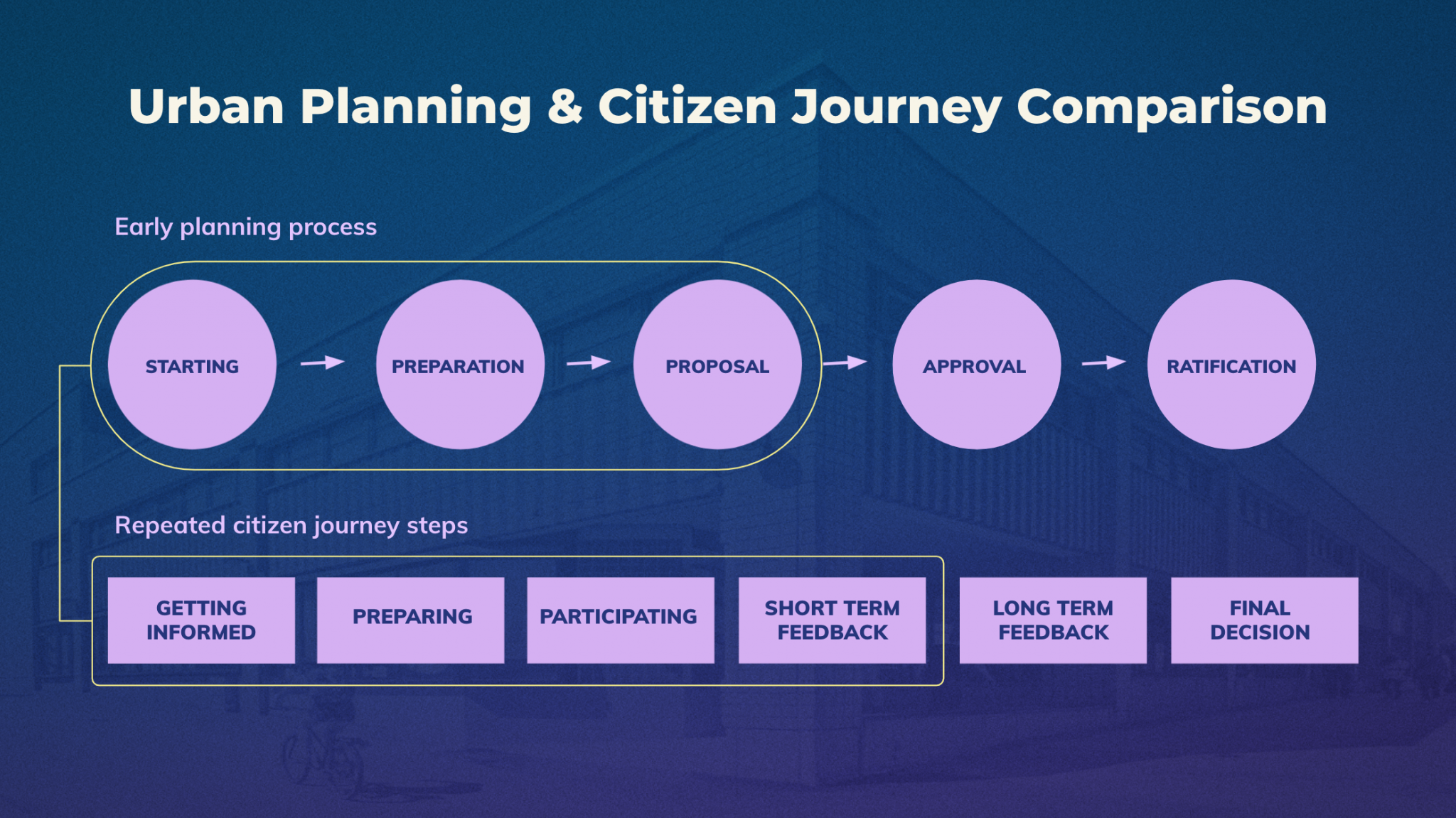SEP ’21 – OCT ’21 | group project | ‘Designing for Services’ course | Aalto University, City of Espoo Urban Planning Department
Espoo is an international city and home to over 150 different nationalities. More than 19% of Espoo residents speak a foreign mother tongue, and this number is expected to rise to 30% by 2035. To support the city in engaging residents with a language barrier in the urban planning process, my team and I prototyped our way to a process proposal that makes participation successful for all Espoo citizens.
In depth interviews with municipal stakeholders and experts, as well as a survey with over 60 Espoo residents helped us analyse how the city currently includes residents in the urban planning process. Simultaneously, we iterated with communication tools in Läkkitori Plaza – a square in the Leppävaara area of Espoo that will be re-constructed – as a case study. Many immigrants as well as native Finns live there, and enjoy the area’s local restaurants, cafes, and shops. It is the ideal place to research how the residents of Espoo might better participate in the urban planning process.
Project highlights
- Analysis of Espoo’s urban planning process
- Insights into needs and wants of internal stakeholders, from politicians to urban planners
- Insights into types of international residents and ways to engage with them
- Various experiments inspiring civil servants to directly engage with citizens despite language barriers
- Alignment of Espoo’s urban planning process with citizen’s experience through a future citizen journey
Prototype and learn
We first designed and tested a photo elicitation booklet to experiment with non language-dependent communication. Our prototype combined carefully curated instructions, pictograms and images which helped residents of Läkkitori Plaza communicate their ideas to us.
Based on our first experiment’s success, we hosted a co-creation event. It consisted of various elements – photo elicitation, sticker maps, collective voting – to accommodate different participation needs.
With these tools we gathered rich visual and textual data about people’s language levels and engagement styles. By inviting municipal partners to participate in the event, we also made co-creation visible and tangible to all stakeholder levels.

Typologies
Many residents had valuable thoughts to share with the urban planning department, but did so in different ways. Analysis of this fieldwork revealed four typologies, based on language fluency, as well as levels of engagement.
In this context, high language fluency is defined by sharing the same language as those of the cities facilitations. For residents who don’t speak very fluent Finnish or English, other methods that are less language dependent allow them to participate.
A high level of engagement means a resident has the interest and resources to participate. Engagement levels can depend on multiple factors, personal interest, available time, or how welcomed they feel to participate by the facilitators or event.
As a result, low engagement and low fluency types are less independent and can provide less detailed feedback than high fluency, high engagement types. This does not make their contributions less valuable though. Engaging these people means leaving your comfort zone, to meet people where they are.

From Process-Centred to Citizen-Centred
For Espoo’s urban planning processes to become more participatory, we helped them move from a process-centred to a citizen-centred approach. Currently, the city of Espoo is oriented towards the internal – inside the office – processes of getting plans created by architects and approved by committees. To make participation more systematic and widespread throughout the different phases of the urban planning process, we aligned their internal processes with the touchpoints needed for successful participation.
We created a future citizen journey with the six touchpoints: getting informed, preparing, participating, short term feedback, long term feedback and the final decision, complementary to the existing stages of the planning process. Most of the opportunity for participation is early on. The first 4 touchpoints are repeated throughout the starting, preparation and proposal stage of the planning process. After these stages, the planning process becomes purely bureaucratic and legal. The steps ‘long term feedback’ and ‘final decision’ enable residents to follow these later stages and understand their reasoning.
Effectively navigating this journey differs for different typologies. Utilising multiple channels engages diverse citizens. Flexible participation events accommodate many engagement levels, and a diversity of language skills, creating maximum inclusion. Transparency and responsiveness are necessary throughout to create trust. But it is the social momentum that develops around visible, positive, and inclusive participation which is key.
This new form of engagement can become the basis for the “reconfiguration of roles” were citizens self-organise and habitually volunteer the valuable participation on which long-term municipal efforts depend. Citizens will be more committed and more in control, motivated by feelings of ownership and belonging.
Team: Austen Arnould, Virve Boesch, Jelske van de Ven
Images by Austen Arnould







